The art of city tripping in Nantes
In the west of France, on the banks of the Loire, lies the vibrant city of Nantes. The sixth-largest city in the land of croissants and wine is known for its creative and artistic scene. You don’t need to step into a museum to see art here—the streets are full of it. Some artworks even move through the former port city. Nantes is the city break destination for art lovers.
Nantes has a beautiful old town just as you’d expect from a French city—historic buildings with elegant, light-coloured façades, café terraces where what many consider the most beautiful language in Europe is spoken, and cobbled streets where your summer sandals make that unmistakable holiday sound.
So what sets Nantes apart? It feels like one big open-air museum. In what other city can you follow a walking and cycling route past 120 artworks, all free to admire—and in some cases, even to ride? Here are six reasons why art lovers shouldn’t miss Nantes.
1. In Nantes, you can collect artworks without getting lost
Not great with maps and not keen on constantly staring at Google Maps? Just follow the 20-kilometre Ligne Verte—or ‘green line’—through Nantes, guiding you past over 120 different artworks. Getting lost is impossible, and your phone can stay tucked away in your pocket.
The idea began in 2012, during the first edition of the Le Voyage à Nantes arts festival. Each year the festival has a new theme, and with every edition, new artworks are given a permanent place along the line.
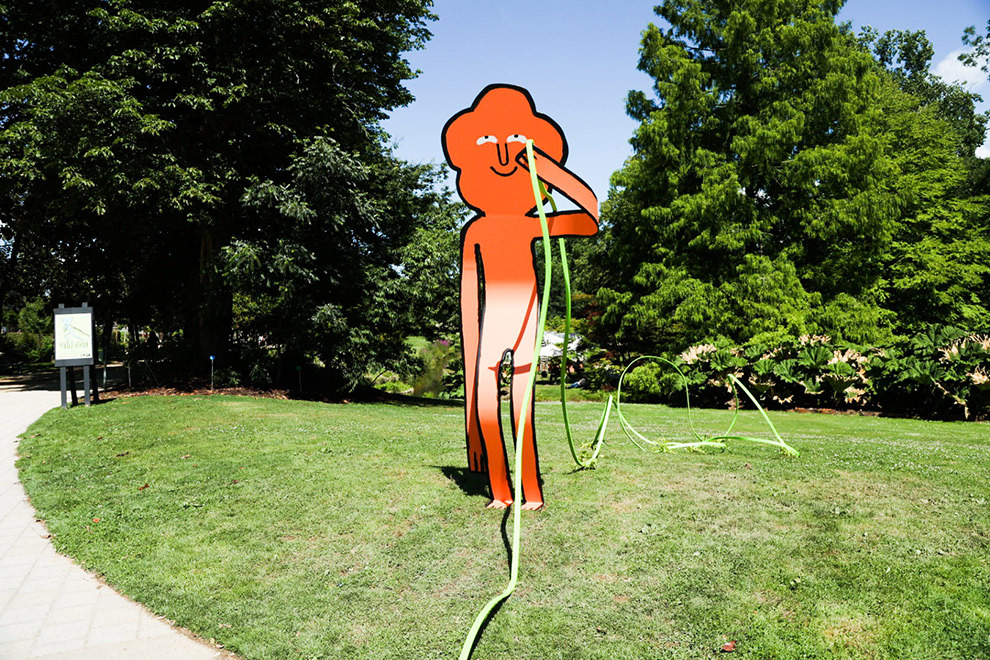
Photo: Filili Viridi, Jean Jullien, Nantes © G. Wester, NM
2. A new surprise awaits you on every street corner
120+ artworks… wouldn’t that get repetitive? Not in Nantes—because the artworks scattered across the city are incredibly diverse. From a “tree” made of basketball hoops (L’Arbre à Basket) to a building with a façade resembling a mountain of paper shreds that plays birdsong as you walk beneath it (Air), the variety is striking.
Many of the pieces also serve another purpose. Children, for example, climb and play on a giant wooden Chinese dragon or bounce on the trampolines hidden in the “craters” of the moon-like landscape Va Marcher sur la Lune.
One of the more recent surprises is the enormous wooden figure L’homme de bois in the Jardin des Plantes. In this 18th-century botanical garden, you can admire even more artworks among over 10,000 plant species.

Photo lefts: “On va marcher sur la lune”, Nantes © F.Tomps, Photo upper right: L’homme de bois, Fabrice Hyber, Nantes © M.Argyroglo, Photo lower right: Le Dormanron, Claude Ponti, Nantes © Ville de Nantes
3. “Do not touch”? In Nantes, you can even ride the art at Les Machines de l’Île
In Nantes, they don’t bother with ropes to keep you away from the art. In fact, you can even go for a ride on some of it. On the Île de Nantes, Les Machines de l’Île—huge mechanical metal artworks in the shape of animals—roam the area.
The 12-metre-tall elephant, for example, carries up to 50 passengers on a slow journey through the former shipyards. Travelling at about 1 km/h, it gives you plenty of time to take in the architectural highlights of the area.
In the Galerie des Machines, you can also watch a giant spider, caterpillar, heron, and chameleon come to life—some of which you can even control yourself. Prefer to dive into the marine world? In the same former shipyard stands the Carrousel des Mondes Marins, a 25-metre-tall carousel with three levels full of fantastical sea creatures you can ride.
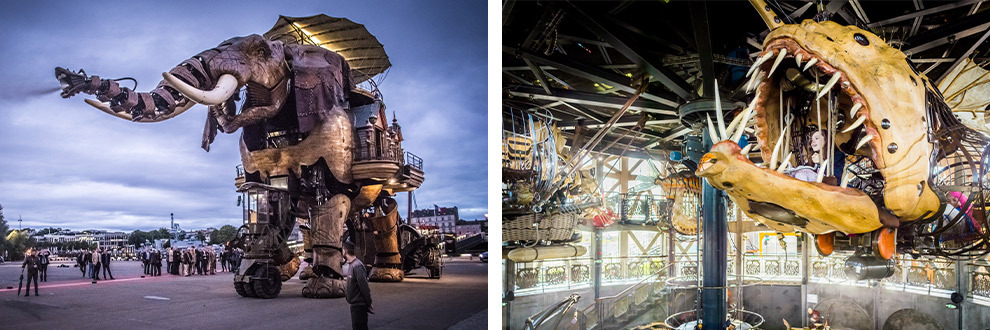
Photo left: Les Machines de l'île, Nantes © F.Tomps, Photo right: Carrousel des Mondes Marins, Nantes © F.Tomps
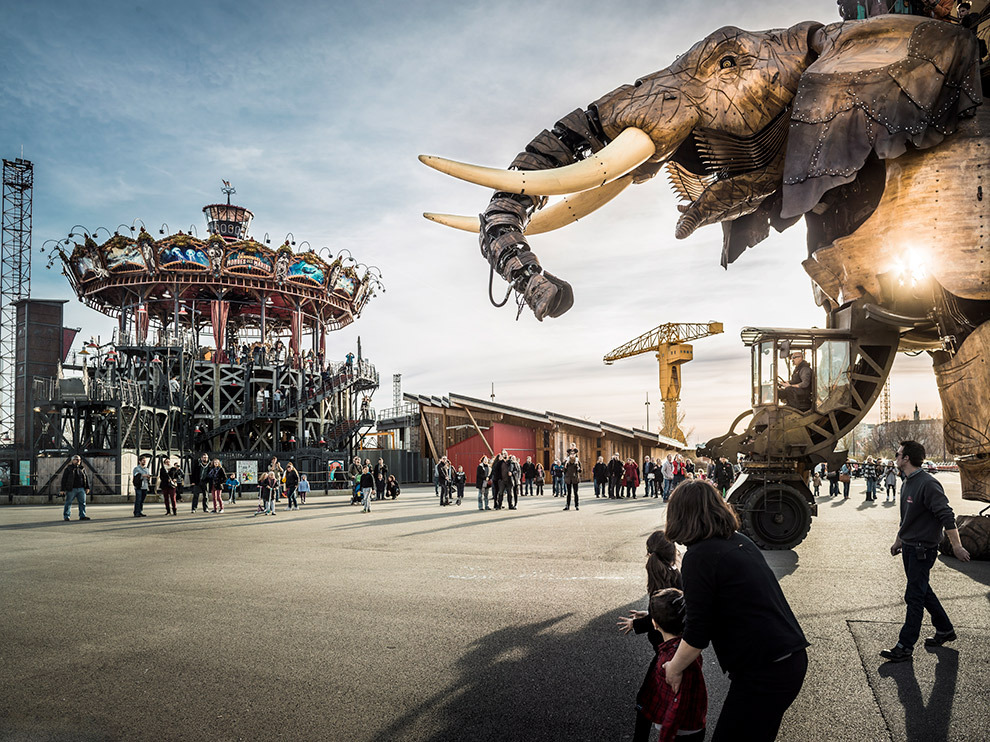
Photo: Les Machines de l'île, Nantes © F.Tomps
4. Old and new come together in Nantes
There’s plenty of contemporary and innovative art in Nantes, but you can’t escape its history—and you wouldn’t want to. Nantes has a fascinating story. If you could travel back a few centuries, you’d find yourself in the capital of the Duchy of Brittany. In the 15th century, you’d witness the construction of Le Château des Ducs de Bretagne, the castle of the dukes.
No need for a real time machine here—you can simply explore the old halls and towers, and learn about Nantes’ history in the museum.
At the Musée d’arts de Nantes, you can admire over 10,000 artworks from the 13th century to the present day, with works by Kandinsky, Monet, and others adorning its walls. Meanwhile, the Musée Dobrée immerses you in more than 2,000 artworks across 2,400 square metres.
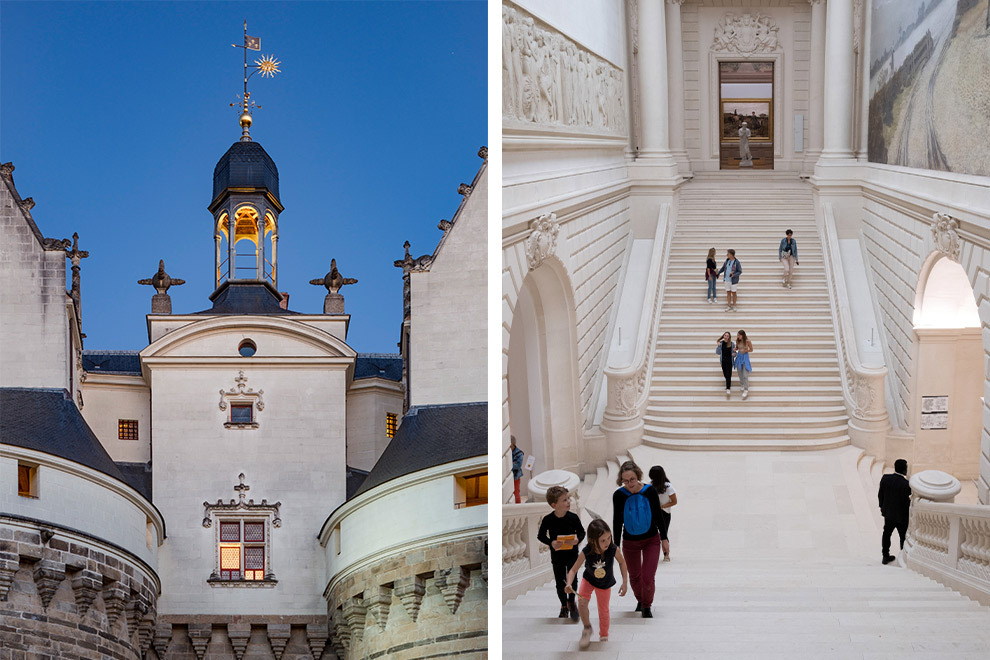
Photo left: Château des ducs de Bretagne, Nantes © P.Piron, Photo right: Musée d'arts, Nantes © C.Clos
5. Even the gardens are works of art
Nantes is home to more than 100 parks and gardens. One of the most remarkable spots is the Jardin Extraordinaire, created in an old quarry. Here, water cascades from a 25-metre-high cliff into a pond, while you can stroll along seven viewpoints overlooking the garden and the city. From the Belvédère de l’Hermitage, you get a stunning view of Nantes and the Loire.
For a touch of Japanese serenity, visit the Île de Versailles, an artificial island transformed into a Japanese garden with ponds, bonsai trees, and a tea pavilion.
From the Île de Nantes, you can take a boat trip or follow the green line to the Jardin Extraordinaire, which—with its extensive collection of exotic plants and impressive greenhouses—is definitely worth a visit. Download a plant identification app to discover which exotic plants you encounter.
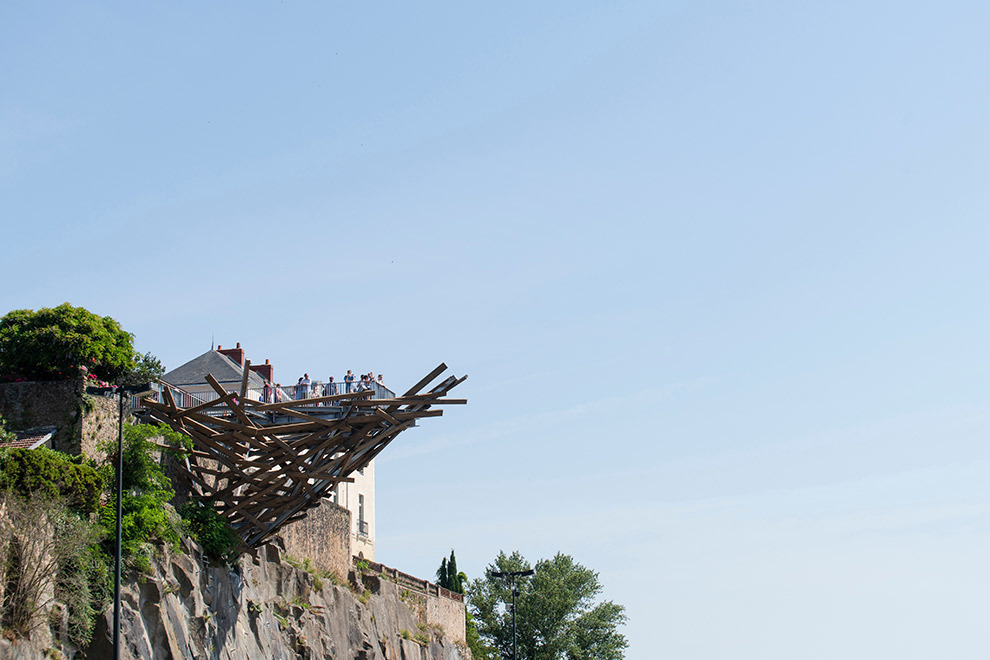
Photo: Tadashi Kawamata, Belvédère de l'Hermitage, Nantes - © M.Argyroglo
6. Even beyond the city limits, there’s no shortage of sights
Nantes continues to surprise even beyond its city boundaries. The area between Nantes and Saint-Nazaire, known as the Estuaire Art Trail, is like an open-air museum. Along the 60-kilometre route, you’ll find 33 large installations, sculptures, and structures by international artists.
For example, Les Anneaux—a series of 18 rings along the water’s edge that glow in neon colours at night. Or Le Serpent d’océan, the steel skeleton of a sea serpent that appears to lie on the water. You can discover them on foot, by bike, or by car.
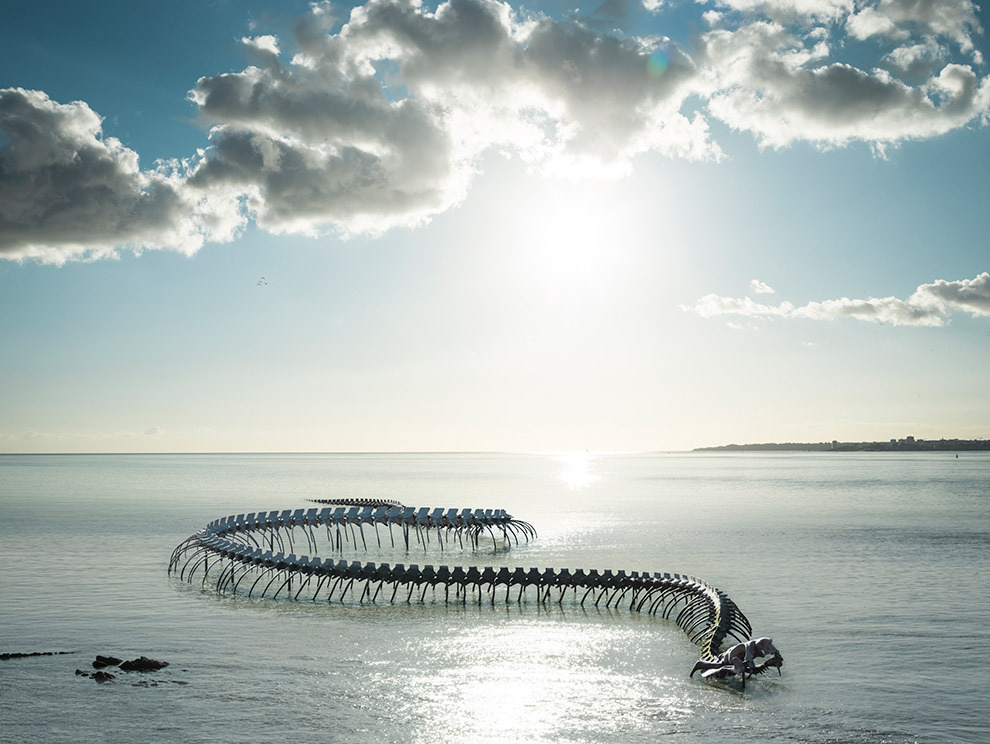
Photo: Serpent d'océan, Huang Yong Ping, Saint-Brevin-les-Pins, Parcours Estuaire Nantes<>Saint-Nazaire © F.Tomps

Photo left: Les Anneaux, Nantes © M.Argyroglo, Photo right: Le Pellerin, création pérenne Estuaire © P.Piron
By bike or car, you can also follow the Le Voyage dans le Vignoble. The Muscadet—the light and fresh white wine from Nantes with a high mineral content—takes centre stage here. Drive with the wind in your hair through vineyards, enjoy tastings at friendly local winemakers, and take in views of old villages, castles, and churches.
Looking for a longer adventure? Drive, cycle, or walk the Traversée Bretonne, the “road to Brittany,” a 500-kilometre route from Nantes to Mont-Saint-Michel. Enjoy the changing landscapes as you pass through iconic places like Saint-Nazaire, Rennes, and Saint-Malo. One moment you’re winding along narrow country roads; the next, the salty ocean air blows in.
Useful to know before your city trip to colourful Nantes
You can reach Nantes quickly by TGV train via Brussels and Paris. From Amsterdam, the journey takes around 6.5 hours—plenty of time to quietly read up on the many artworks and buildings you’ll see there.
With the Pass Nantes, you can explore very affordably. It gives you free access to museums, exhibitions, and iconic sights, plus unlimited travel on public transport. Fancy a guided walk? That’s included too with your pass. You can order the pass for 24, 48, or 72 hours, or even for a full week.
You won’t need a car in Nantes. With 586 kilometres of cycle paths, you can get everywhere on two wheels. You can follow most of the green line by bike, and a trip along the Loire is always a great idea.
Nantes is becoming increasingly popular for its culinary scene. Fresh, seasonal ingredients from the local area are turned into dishes that have rightfully earned Nantes a place on the international La Liste ranking. The city is known for its Rigolettes (candies), Petit Beurre (buttery biscuits), and Muscadet (dry white wine), so make sure to try them while you’re there.
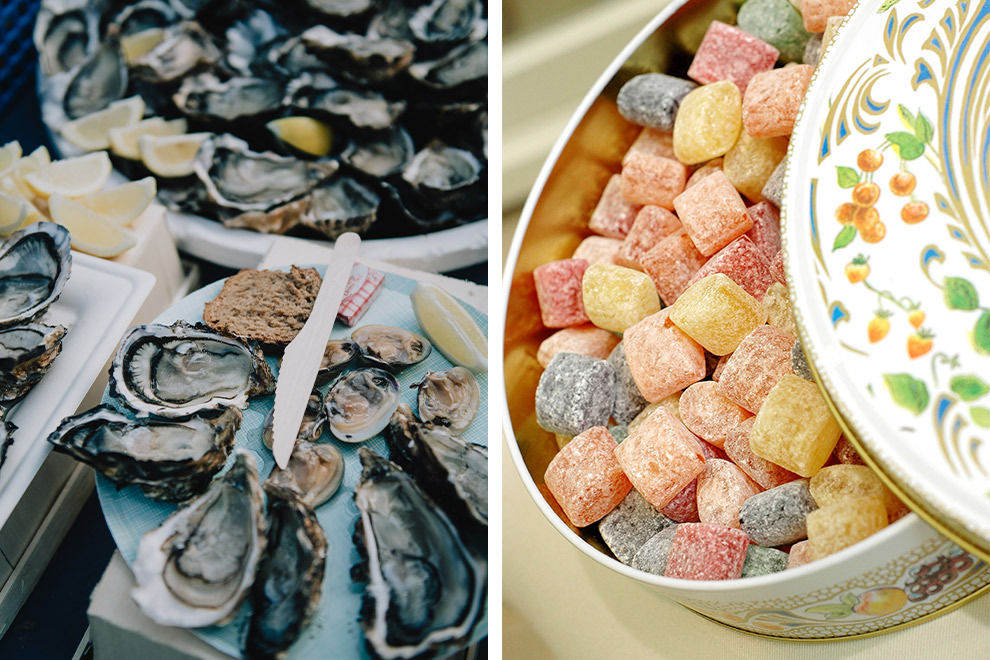
Photo left: Produit local, Nantes © D.Gallard, Photo right: Rigolettes, Nantes © P.Gérard
This article was written in collaboration with Le Voyage à Nantes. For many more tips and inspiration for your artistic city trip to Nantes, visit levoyageanantes.fr.
Create your own blog
Easily add stories to your diary in our online editor or app
Add your images and choose your pages layouts
Share your journey in real time without the fuss!




